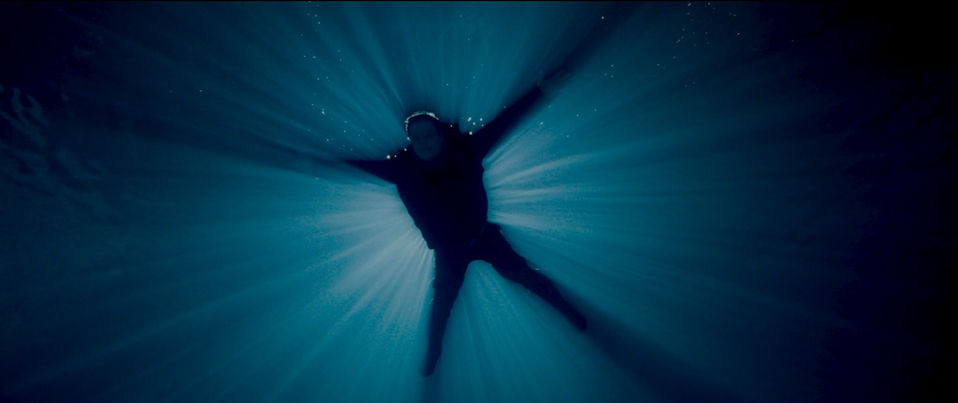
-THE LAST FLARE-
A fisherman’s tale...
FULL LENGTH FEATURE FILM - Inspired by actual events
CURRENTLY FILMING
"Last Flare" Proof of Concept - Captain Mitch's Story - Teaser Trailer

"THE LAST FLARE… A fisherman’s tale"
Full Length Feature Film
(Filming partially completed.)
Logline:
Inspired by true events, weaving a tale of fishermen, the sea's relentless power, and human resilience.
The story follows two main narratives: Jim Ashland, a retired fisherman haunted by his past, and Mitch Peluso, a captain whose determination leads his crew into perilous waters.
Synopsis of "The Last Flare"
Inspired by true events, "The Last Flare" is a gripping tale of survival, redemption, and the unyielding bond between man and the sea.
The story begins with Jim Ashland, a retired sailor in his 70s, reflecting on his life at sea. Through his vivid storytelling, we are transported to the turbulent waters of the Pacific, where the ocean is both a giver of life and a relentless force of nature. Jim’s narration sets the tone for a tale that blurs the lines between reality and myth, as he recounts his own ghostly encounter with a scraggly-haired sailor who saved a crew from a sinking ship—only to vanish into legend.
The narrative shifts to Mitch Peluso, the captain of the ACE, a 58-foot fishing seiner. Mitch is a man driven by ambition, determined to make one last big haul before Thanksgiving. Despite warnings of an impending storm, he leads his crew—Ed, Corey, and the brash ex-military Drew—into the open ocean. The crew’s camaraderie is tested by tension, humor, and Drew’s haunted past, but their shared goal of a successful catch keeps them united.
As the ACE nets a massive haul, the crew celebrates, unaware of the storm brewing on the horizon. When the weather turns, the boat is battered by relentless waves, and a faulty deck hatch begins to take on water. The ACE capsizes, plunging the crew into the icy, unforgiving sea. With no life jackets, a failed emergency beacon, and a sinking skiff chained to the doomed vessel, survival seems impossible.
Meanwhile, Jim, from his coastal home, spots a faint red flare in the night sky. Trusting his instincts and decades of maritime experience, he alerts the Harbor Patrol, guiding them to the approximate location of the distressed vessel. Deputies Brook Walters and Curtis, skeptical at first, come to rely on Jim’s expertise as they race against time to locate the crew.
Back in the water, Mitch and his crew cling to hope and the sinking skiff. Drew emerges as an unlikely hero, risking his life to free the skiff from the ACE. The crew’s bond deepens as they confront their fears, share their regrets, and fight to stay alive. Just as their hope begins to wane, the Harbor Patrol arrives, guided by Jim’s unwavering determination.
The rescue is bittersweet. The crew survives, but Mitch is forever changed. He never captains a boat again, haunted by the loss of his ship and the weight of his decisions. In a poignant twist, Mitch reveals that a part of him—the man he once was—remains with the ACE, now resting on the ocean floor.
The film closes with Jim, standing on his patio overlooking the sea, reflecting on the eternal pull of the ocean. For Jim, the sea is both a curse and a blessing—a place of peril and beauty, where legends are born and lives are forever altered. As the credits roll, we learn that the ACE’s story is true, and its wreck remains a haunting reminder of the power of the sea.
"The Last Flare" is a tale of courage, loss, and the enduring spirit of those who dare to challenge the ocean. It is a story of survival against impossible odds and the unbreakable connection between man and the sea.
INDEPENDENT SCRIPT ANALYSIS---
The screenplay for "The Last Flare" is a rich and layered narrative that combines elements of drama, suspense, survival, and emotional introspection. Below is an analysis of its key components:
1. Theme
-
Connection to the Sea: The screenplay explores the deep, almost spiritual connection between humans and the ocean, portraying it as both a life-giving force and a dangerous, unyielding entity.
-
Survival and Redemption: The story delves into themes of survival against nature's fury, redemption for past mistakes, and the emotional toll of loss.
-
Legacy and Mortality: Through Jim Ashland and Mitch Peluso, the screenplay examines the idea of legacy, mortality, and the lasting impact of one's choices.
2. Characters
-
Jim Ashland: A retired fisherman haunted by his past and deeply connected to the sea. His character is layered with emotional depth, showcasing his struggles with aging, health, and identity after leaving the life he loved.
-
Mitch Peluso: A determined captain whose ambition and need for one last big haul lead to disaster. His arc is tragic, as he grapples with guilt and loss.
-
Supporting Characters: The crew members (Ed, Corey, Drew) are distinct and add texture to the story. Drew’s transformation from a cocky ex-military man to a hero is particularly compelling.
3. Structure
-
Opening: The screenplay begins with a poetic and reflective tone, introducing Jim Ashland and his connection to the sea. This sets the emotional and thematic foundation.
-
Conflict: The central conflict arises from Mitch’s decision to take the ACE out despite warnings about the weather, leading to the boat’s capsizing.
-
Climax: The survival struggle in the stormy ocean, the sinking of the ACE, and the crew’s desperate attempts to stay alive create high-stakes drama.
-
Resolution: The rescue of the crew and Jim’s role in spotting the flare provide a satisfying conclusion, while Mitch’s reflection in the bar adds a haunting, introspective note.
4. Dialogue
-
The dialogue is natural and character-driven, revealing personalities and relationships. For example, Mitch’s exchanges with his crew highlight his stubbornness and leadership, while Jim’s reflective monologues convey his wisdom and emotional depth.
5. Visual Elements
-
The screenplay is highly cinematic, with vivid descriptions of the ocean, stormy seas, and underwater scenes. The haunting imagery of the sunken ACE and the ghostly sailor add a supernatural layer.
-
The transitions between Jim’s memories, Mitch’s survival story, and the present-day scenes are fluid, creating a dynamic visual narrative.
6. Pacing
-
The pacing alternates between reflective moments (Jim’s introspection) and intense action sequences (the storm and survival struggle). This balance keeps the audience engaged while allowing emotional depth.
7. Supernatural and Symbolic Elements
-
The ghostly sailor adds mystery and symbolism, representing the lingering presence of the sea’s dangers and the emotional scars left behind.
-
The ocean itself is portrayed as a living entity, with its breath (wind), heartbeat (waves), and hunger (storms), adding a poetic and symbolic dimension.
8. Strengths
-
Emotional Depth: The screenplay effectively captures the emotional struggles of its characters, making it relatable and impactful.
-
Suspense and Drama: The survival scenes are gripping and intense, keeping the audience on edge.
-
Character Development: Both Jim and Mitch undergo significant emotional journeys, making them compelling protagonists.
-
Visual Appeal: The descriptions of the ocean and storm are vivid and cinematic, offering opportunities for stunning visuals.
9. Commercial Viability
-
Target Audience: The screenplay has strong potential for commercial success due to its universal themes, emotional resonance, and visual spectacle. It appeals to fans of survival dramas, maritime stories, and character-driven narratives. It could attract viewers of films like The Perfect Storm, Cast Away, or All Is Lost.
-
Streaming Potential: With the rise of streaming platforms, this screenplay could be adapted into a feature film or limited series, catering to audiences who enjoy binge-worthy, emotionally charged content.
-
Emotional Impact: The screenplay's exploration of loss, redemption, and the human spirit's endurance creates a lasting emotional impact, increasing its potential for critical acclaim and audience engagement.
10. Conclusion:
"The Last Flare" is a poignant and gripping screenplay that combines action, emotion, and introspection. Its layered characters, vivid visuals, and universal themes make it a compelling story with the potential to resonate deeply with audiences. With careful editing and strong performances, it could translate into a powerful feature film.









